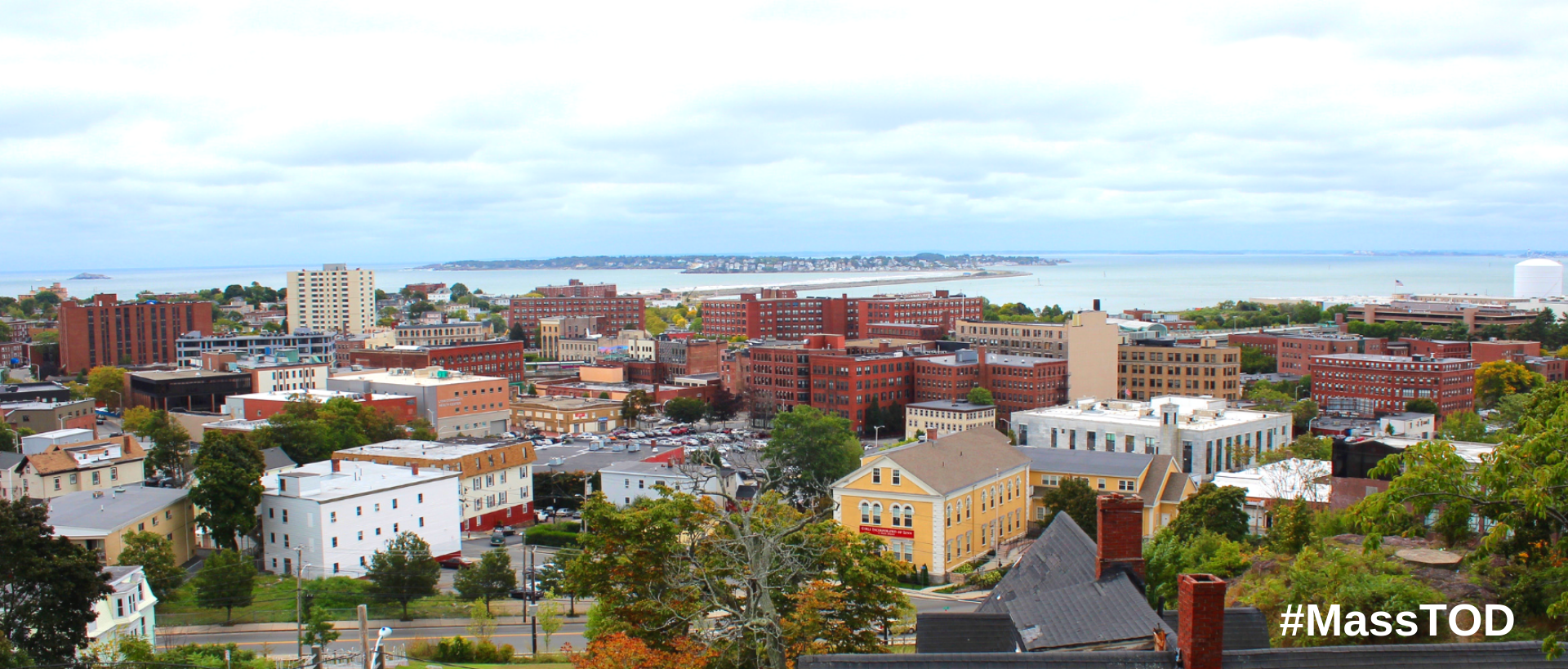
On February 27, MassINC hosted “Stimulating Transformative Development in Gateway Cities,” a State House forum co-sponsored by LOCUS of Massachusetts and the Massachusetts Smart Growth Alliance (MSGA). The event examined state and federal tools that can work in combination to foster transit-oriented development (TOD) in our Gateway Cities, particularly highlighting the importance of HDIP, Opportunity Zones, 40R, and 43D.
Dr. Tracy Corley, MassINC’s new Transit-Oriented Development Fellow, introduced new research from the Gateway Cities Innovation Institute, including the recently-released third installment of the TTOD Policy Brief series: Using 40R and 43D to Stimulate Transformative Transit-Oriented Development in Gateway Cities. Larry Field, Deputy Director of the MSGA, moderated a related panel, which featured Dave Traggorth, President of Traggorth Companies, Laura Barrett, Real Estate Innovation Officer of MassDevelopment, and Tim Murray, President & CEO of the Worcester Regional Chamber of Commerce.
Elijah Plymesser of LOCUS opened the forum, noting the overall importance of state programs like HDIP and the broader role these tools have in communities across the Commonwealth. He also introduced Senator Brendan Crighton of Lynn, the forum’s legislative host.
Senator Crighton spoke about HDIP at length, contextualizing its impact in his community. He described a current project under construction that is expected to provide $5 million in tax payments annually; currently, Lynn receives just $3,000 from the long-vacant parcel. His comments encouraged listeners to consider all the benefits of private development catalyzed by public investment.

Dr. Corley’s presentation highlighted key research findings from the Gateway Cities Innovation Institute’s Transformative TOD Initiative (her slide are available online here). She first outlined the goals of her work – promoting TOD for its environmental, fiscal, and equitable benefits – and the broad strategies that she will employ in the next three years as a Fellow. She also explored the configuration of Opportunity Zones in Gateway City stations areas, presenting maps from the first TTOD policy brief. Dr. Corley also unveiled new research demonstrating that each dollar in state HDIP funding has leveraged approximately 12 additional dollars.
Moderated by Larry Field of MSGA, the subsequent panel highlighted the specific ways that HDIP projects have impacted Gateway Cities.

Developer Dave Traggorth, who completed the first-ever HDIP project, shared how HDIP allowed him to produce the J.M Lofts in Haverhill. The adaptive reuse project demonstrated a market for downtown apartments, paving the way for subsequent residential development near the station.
Tim Murray, who was Lieutenant Governor of Massachusetts when HDIP was first enacted and is now President and CEO of the Worcester Regional Chamber of Commerce, described how HDIP brought TOD to his downtown, particularly in how a building that once produced rail cars has since come back to life as the Edge at Union Station.

MassDevelopment’s Laura Barrett shared how HDIP has drawn developers to TDI districts around the state. As they gain experience putting the incentive to work in Gateway Cities, these creative real estate leaders are seeking repeat engagements, triggering the flow of reinvestment that the TDI program was created to stimulate.
Click here for video of the forum, or here for still images. For more background on Opportunity Zones prepared by LISC, click here.
MassINC would like to thank Senator Crighton, our partners at LOCUS Massachusetts, and MSGA, the Barr Foundation, and everyone who join us for this forum.
The Massachusetts Smart Growth Alliance asks that you fill out their “Stay Connected” box at https://ma-smartgrowth.org/ if you would like to hear about related news and events.
